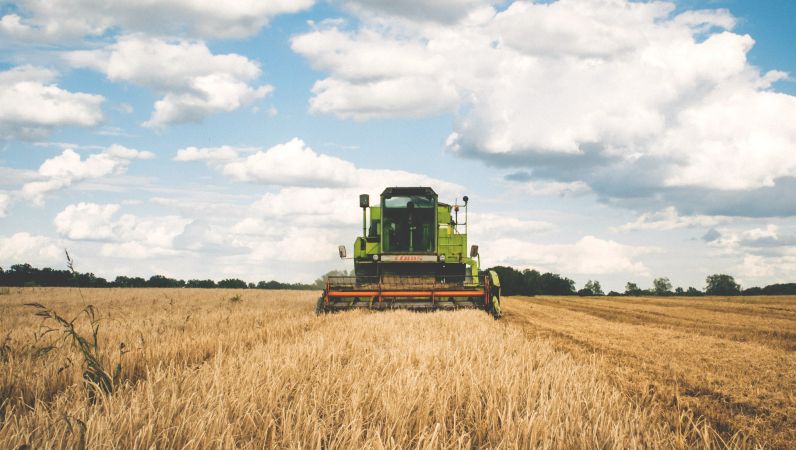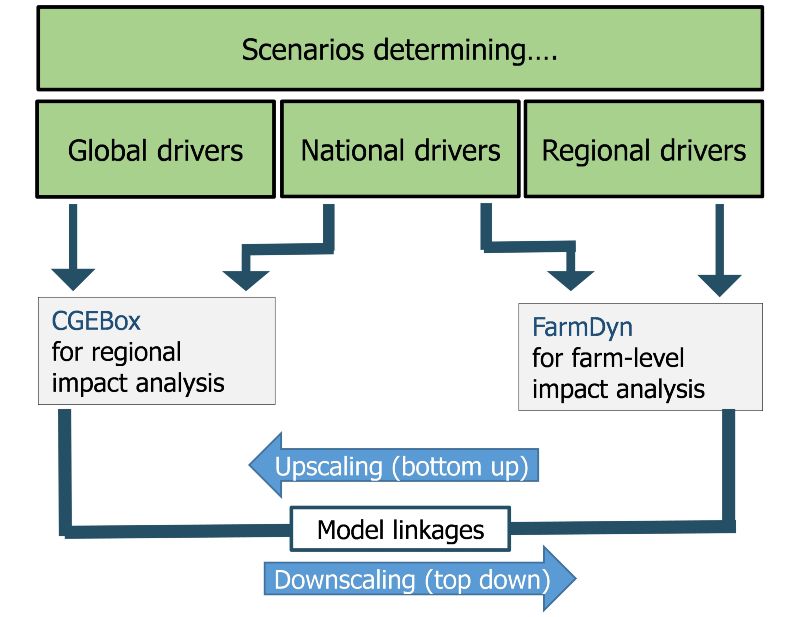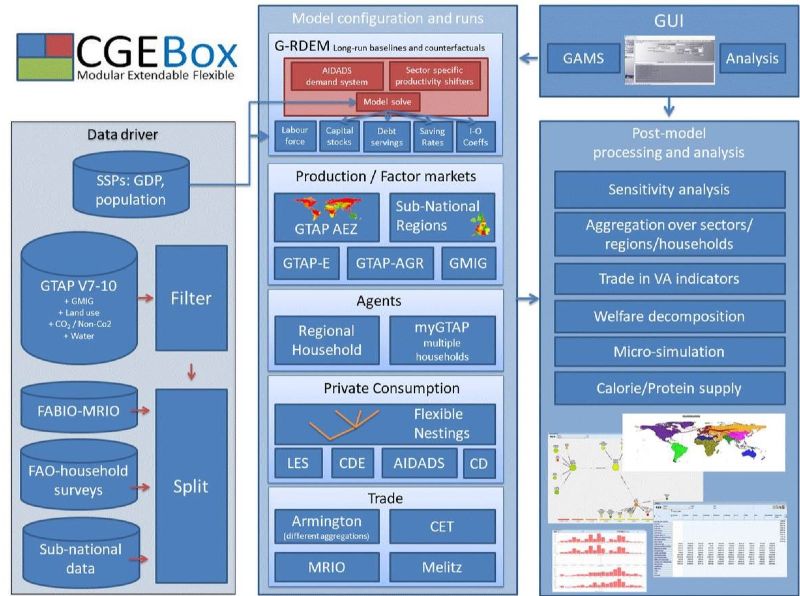Objective of the competence platform project Transform2Bio is the development and assessment of transformation pathways to a sustainable bioeconomy in the Rheinische Revier, looking beyond the status quo and the currently observed value chains while considering manifold bio-physical and economic interactions. The methodological approach combines the development of scenarios with the application of economic simulation models as tools that consider core relations in production, demand and trade in the (bio)economy. Transform2Bio combines two detailed simulation models in forward-looking analysis.
The bioeconomic farm model FarmDyn is used to study developments at the farm-scale, providing a detailed description of farm management and bio-physical relations. It simulates the profit maximizing production decision of a farm, considering resource endowments such as land and labor, available technology as well as the market and policy environment. This provides insights on outcomes such as production quantities, input use, profit and costs as well as on environmental indicators such as greenhouse gas emissions or nitrogen surpluses.

FarmDyn is currently used in Transform2Bio to assess trade-offs between biomass provision and improved environmental status as essential parts of a sustainable bioeconomy, considering two core legislations: voluntary agri-environmental schemes and the German implementation of the EU Nitrates Directive. First results indicate that these policies cause only limited reductions of biomass output in the Rheinische Revier while reducing negative environmental externalities of farming. Some changes in cropping patterns are observed in nitrate vulnerable zones where especially tight rules apply. Another field of research for FarmDyn in the context of Transform2Bio is the assessment of uptake/adoption and impact of new technology at the farm-scale. New technologies can contribute to increased sustainability of the bioeconomy in the Rheinsche Revier and foster regional development. In close cooperation with the BioSC FocusLab greenRelease as well as the cluster project PhenoRob, FarmDyn is currently extended to integrate and assess technologies focusing on more sustainable crop management.

Farm models require detailed data on farm-level to which access is quite restricted in Germany. In cooperation with the projects PhenoRob and Mindstep, a spatially explicit synthetic farm population for North Rhine-Westphalia is developed which matches important characteristics of the actual farm structure. The consideration of different statistical data sets allows generating results which represent the farm heterogeneity in the Rheinsche Revier and provide quantitative estimates for the whole region. Farm models enable the detailed assessment of farm-level responses to an evolving environment such as policy changes or technical progress. However, they neglect market feedback and cannot assess changes in up- and downstream industries of the bioeconomy.
The use of computable general equilibrium (CGE) models as the second economic model type in Transform2Bio addresses these limitations. CGE models depict interlinkages between all sectors in the economy to assess the impacts of policy or technology changes beyond the specific sector in the economy. Our global model CGEBox also considers interactions of the Rheinische Revier with other regions in Germany and the rest of the world. We simulate the impact of three scenarios on the economy in the Rheinisches Revier. The first scenario changes the electricity production mix in Germany by replacing coal with renewable sources. The second scenario increases the production efficiency of the agricultural sector, and the third scenario increases the efficiency of biochemical sectors in the use of primary agricultural inputs. From the simultaneous consideration of these scenarios, we expect a decrease in CO2 emissions due to lower use of coal, and an increase in agricultural production and in land rents due to more efficient farming. Furthermore, reduced use of biomass for food and feed is likely due to the competition with the petrochemical sector for biomass. The modeling approach includes the possibility that the scenario results might go in reverse or in mixed directions.
Finally, linking FarmDyn and the CGEBox in Transform2Bio combines the advantages of the two modeling approaches. CGEBox can provide price changes to FarmDyn whereas the latter can quantify and return productivity changes. This model linkage will contribute to a more comprehensive understanding of transformation pathways towards a sustainable bioeconomy in the Rheinische Revier.

PD Dr. Wolfgang Britz
ILR - Economic Modeling of Agricultural Systems Group
Universität Bonn
Prof. Dr. Thomas Heckelei
ILR – Chair of Economic and Agricultural Policy
Universität Bonn
Prof. Dr. Silke Hüttel
ILR – Chair of Production Economics
Universität Bonn
Prof. Dr. Grit Walther
OM – Chair of Operations Management
RWTH Aachen